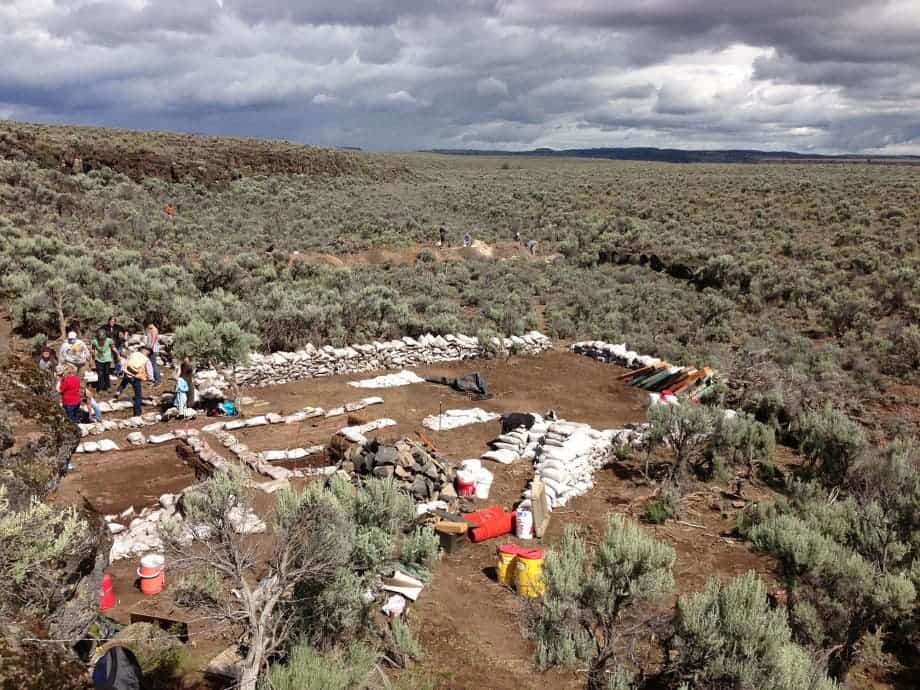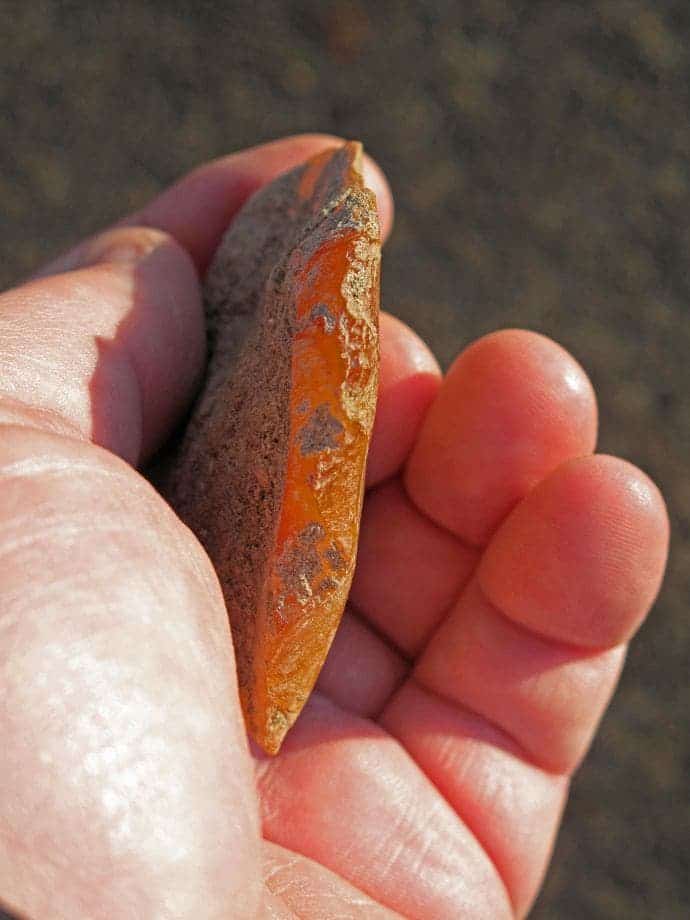Archaeologists working in Oregon have uncovered a stone tool which seems to be way older than any previously documented site of human occupation in North America.

This June 6, 2013 photo provided by the University of Oregon Museum of Natural and Cultural History shows the Rimrock Draw Rockshelter archaelogical dig outside Riley, Ore. It is here that they found the tool now, in 2015. Photo: Patrick O’Grady, AP
When archaeologists date things, they use a relative law borrowed from geology, called the superposition law. The superposition law states that sedimentary layers are deposited in a time sequence, with the oldest on the bottom and the youngest on the top; in other words, the new stuff are at the surface, while the older things are buried more and more. But this law doesn’t always stand – especially in geology, many things can distort the natural setting, such as a volcano, a fault, or even just the movement of tectonic plates. Interestingly enough, in archaeology that law stands up more than geology, because we’re talking much thinner layers and much shorter periods of time (hundreds or thousands of years, as opposed to millions).
So when University of Oregon archaeologist Patrick O’Grady, who supervises the dig in Oregon, found a hand-held scraper chipped from a piece of orange agate he was ecstatic. Why? Because he found it under a layer of volcanic ash from an eruption of Mount St. Helens that has been dated to 15,800 years ago, which indicates that the tool is much older than that layer.

This undated photo provided by the University of Oregon Museum of Natural and Cultural History shows a scraper chipped out of agate found at an ancient rock shelter in the high desert of eastern Oregon. Photo credits: Photo: Patrick O’Grady, AP
There are two reasons to get excited about this: first of all, because the agate is not from the area – it’s not clear where exactly the agate was brought from, but it’s nowhere near the site; and second of all, the oldest known advanced human settlement in the area is the 13,000 year old Clovis culture.
“No one is going to believe this until it is shown there was no break in that ash layer, that the artifact could not have worked its way down from higher up, and until it is published in a convincing way,” he said. “Until then, extreme skepticism is all they are going to get.”
As a geologist, I do see some ways through which the tool may have been moved up, but it’s hard to emit a valid hypothesis without at least seeing the site. The first thing that comes to mind is a landslide, which may have relocated the tool and/or the ash layer. But if this is the case, you’d have to see all the higher layers also mixed up, so it should be fairly easy to notice. I can also imagine some scenarios where water carried it up, or more likely, where the tool was actually buried by someone who came around later. But who would bury it, or why? Those all questions which remain to be answered.









